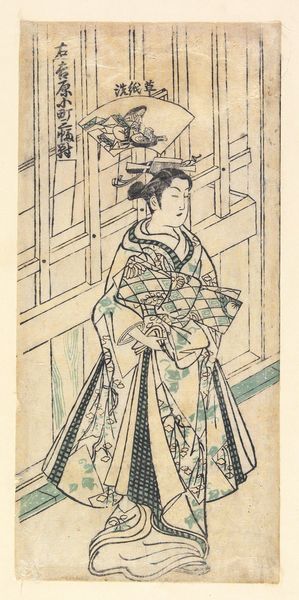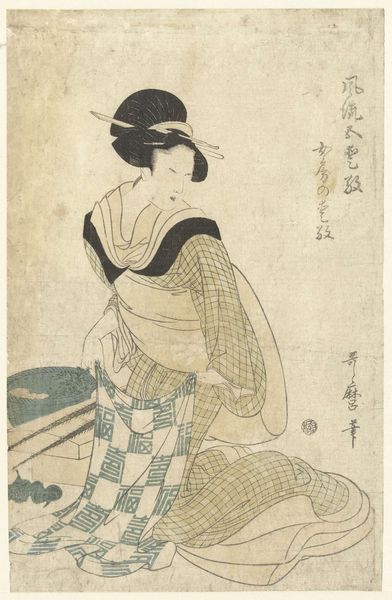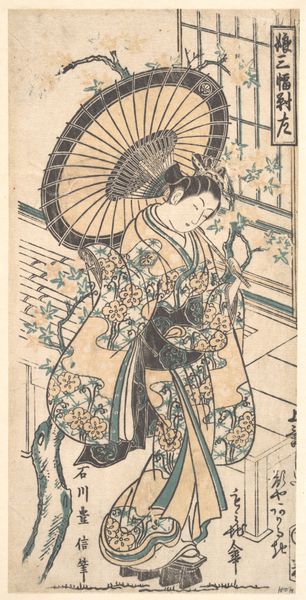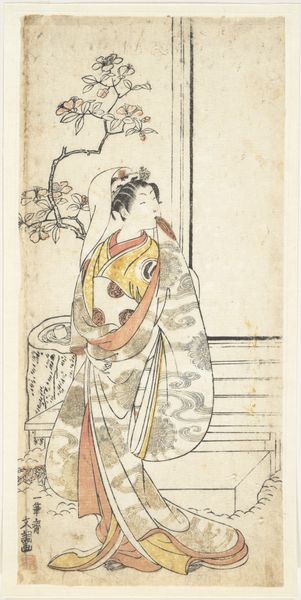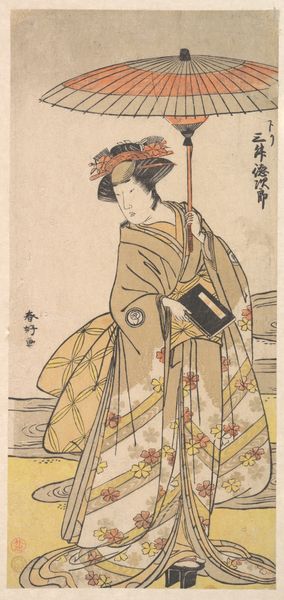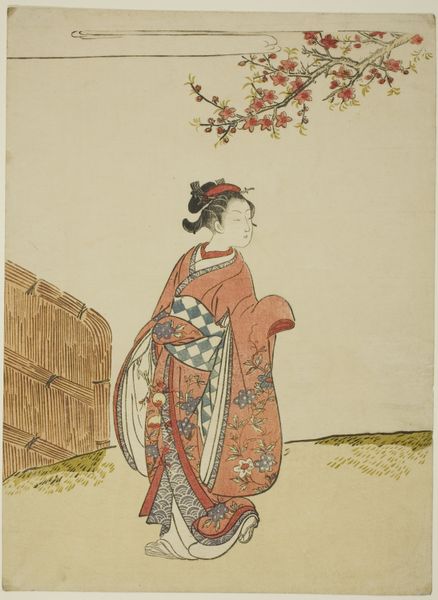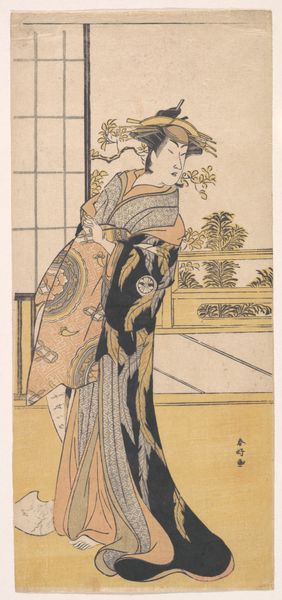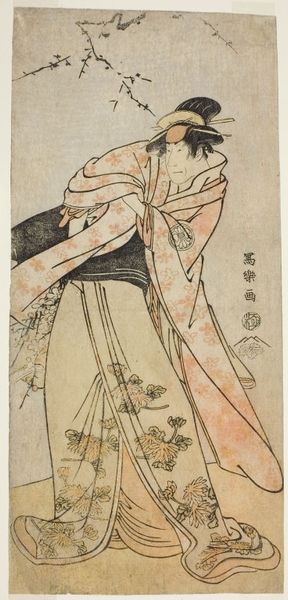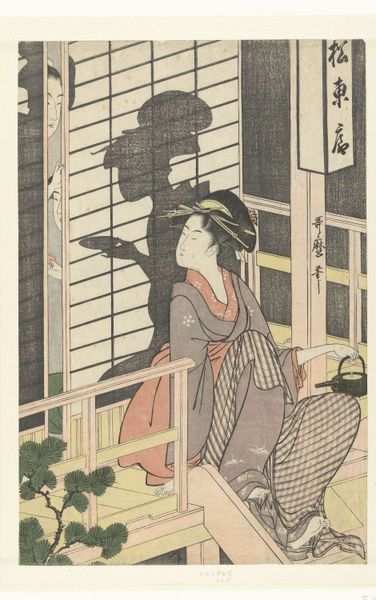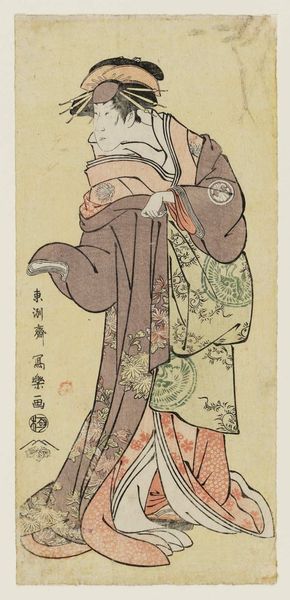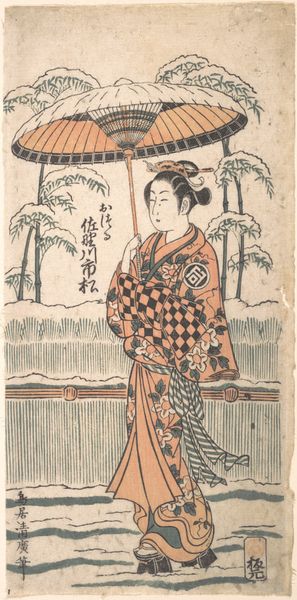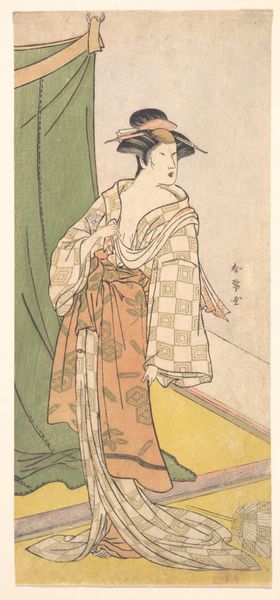
print, textile, woodblock-print
#
portrait
# print
#
asian-art
#
textile
#
ukiyo-e
#
figuration
#
woodblock-print
#
genre-painting
Dimensions: height 310 mm, width 136 mm
Copyright: Rijks Museum: Open Domain
Editor: This woodblock print by Torii Kiyotsune, made sometime between 1753 and 1757, portrays the actor Nakamura Tomijuro in a female role. I’m immediately drawn to the intricate lines of the kimono and the way they contrast with the simpler background. What stands out to you? Curator: I'm struck by the materiality itself. This isn't just a picture; it’s a testament to labor. Think about the process: the carving of the woodblock, the mixing of pigments, the printing, and the paper it’s printed on. Each of those components and the craft traditions behind them imbue the image with meaning. How do you think the print medium affects our understanding of the subject? Editor: That’s a good point! Because it's a print, does that mean it was widely available? Would that affect how the Kabuki actor, Nakamura Tomijuro, was perceived at the time? Curator: Exactly! Prints democratized art. Suddenly, images of actors and courtesans – figures of the floating world, ukiyo-e – became accessible beyond the elite. The print’s reproducibility meant that Nakamura Tomijuro's image could be circulated, consumed, and, in a sense, commodified. What does that say about the actor’s status and the consumption of celebrity in Edo society? Editor: I never considered the role of consumption when viewing older art like this print, so thank you for your materialist insights. Now I can more deeply appreciate not just what it depicts but how it came into being and the impact it had on society. Curator: Precisely, by focusing on production and circulation, we can gain deeper understanding and critique traditional art historical narratives centered solely around authorship and aesthetics.
Comments
No comments
Be the first to comment and join the conversation on the ultimate creative platform.
